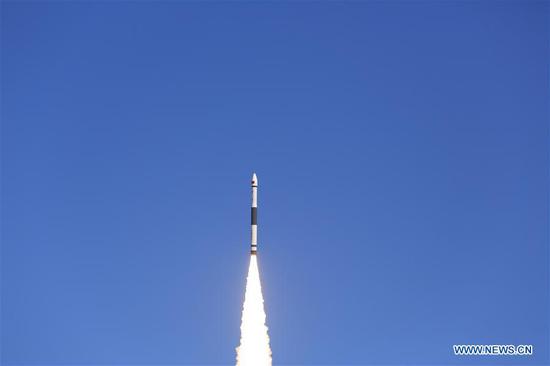American astronomers discovered a new extremely distant object far beyond Pluto with an orbit that supported the presence of an even-farther-out, Super-Earth or larger Planet X.
The findings announced Tuesday by the International Astronomical Union's Minor Planet Center are redefining the Solar System's edge.
The newly found object, called 2015 TG387, runs about 80 astronomical units (AU) from the Sun, a measurement defined as the distance between the Earth and Sun.
Pluto is around 34 AU, so the object is about two and a half times further away from the Sun than Pluto is right now.
The new object is on a very elongated orbit and never comes closer to the Sun, a point called perihelion, than about 65 AU, according to the study.
Only 2012 VP113 and Sedna at 80 and 76 AU respectively have more-distant perihelia than 2015 TG387.
Though 2015 TG387 has the third-most-distant perihelion, its orbital semi-major axis is larger than 2012 VP113 and Sedna's, meaning it travels much farther from the Sun than they do. At its furthest point, it reaches all the way out to about 2,300 AU.
2015 TG387 is one of the few known objects that never comes close enough to the Solar System's giant planets, like Neptune and Jupiter, to have significant gravitational interactions with them.
"These so-called Inner Oort Cloud objects like 2015 TG387, 2012 VP113, and Sedna are isolated from most of the Solar System's known mass, which makes them immensely interesting," said Scott Sheppard with Carnegie Institution for Science. "They can be used as probes to understand what is happening at the edge of our Solar System."
David Tholen with the University of Hawaii said: "Currently we would only detect 2015 TG387 when it is near its closest approach to the Sun. For some 99 percent of its 40,000-year orbit, it would be too faint to see."
The object was discovered as part of the team's ongoing hunt for unknown dwarf planets and Planet X.
The computer simulations showed that not only was 2015 TG387's orbit stable for the age of the Solar System, but it was actually shepherded by Planet X's gravity, which keeps the smaller 2015 TG387 away from the massive planet. 2015 TG387 is likely on the small end of being a dwarf planet since it has a diameter near 300 kilometers.
This gravitational shepherding could explain why the most-distant objects in our Solar System have similar orbits and these orbits keep them from ever approaching the proposed planet too closely, which is similar to how Pluto never gets too close to Neptune even though their orbits cross, according to the study.
"What makes this result really interesting is that Planet X seems to affect 2015 TG387 the same way as all the other extremely distant Solar System objects. These simulations do not prove that there's another massive planet in our Solar System, but they are further evidence that something big could be out there" said Chad Trujillo with Northern Arizona University.


















































